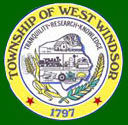By Lea Kahn, Staff Writer
WEST WINDSOR — Princeton University rolled out its proposed 2026 Campus Plan in front of the West Windsor Township Planning Board, which listened quietly before posing a few questions — mostly centered on transportation — to university officials.
Planning Board Chairman Marvin Gardner acknowledged that the presentation before the board is a courtesy review. Although Princeton University owns hundreds of acres of land on Washington Road in West Windsor, on the south side of Lake Carnegie, there are no immediate development plans.
Princeton University Vice President and Secretary Robert Durkee said the college is looking toward its development needs over the next 10 years, but it is also taking a longer view and looking at its needs for the next 30 years.
The 2016 plan was focused on the school’s campus in Princeton, but the 2026 plan differs in its geographic scope, Mr. Durkee said. The college is taking a “holistic look” at its land in West Windsor, some of which was acquired by the school 100 years ago.
While the 10-year plan will be more specific, the 30-year plan is more conceptual, said Cyndi Rottenberg-Walker of Urban Strategies, Inc. She is a planner with the consulting firm, which is based in Toronto, Canada.
Overall, the plans are guided by five principles that include creating a “sense of place” for students and also making it a welcoming place for people of various backgrounds. Sustainability is another principle, Ms. Rottenberg-Walker said.
As the campus develops, Lake Carnegie — which is now on the south end of campus — may find itself in the middle of the campus, if and when the school’s West Windsor lands are developed by the school, Ms. Rottenberg-Walker said.
When Planning Board member Simon Pankove asked if there are plans to create a “College of X” — a new school that does not exist as part of the university — Mr. Durkee replied that while other Ivy League universities have added law schools, medical schools and business schools, that is not in the works for Princeton University.
“We made a decision that we like it this way. We don’t intend to become something different,” Mr. Durkee said, noting Princeton’s focus on the arts, engineering and science. It has expanded into the areas of genomics and neuroscience.
Transportation issues figured into the Planning Board’s discussion with Princeton University officials. The university has agreed on the need to provide access to campus without increasing the impact of private automobiles.
Mr. Durkee pointed to TigerTransit, the university-operated bus that shuttles students around the campus. Although it is hard to measure, it appears that more students are using it, as well as possibly residents. It is o ne area where the university is seeking guidance, he said.
Planning Board member Andrew Kulley said the Dinky — a two-car train that connects Princeton with the Princeton Junction train station — is an “antique” and that it is an “insane” waste of crossings over Route 1 and Lake Carnegie.
In response to Mr. Kulley’s question on the fate of the Dinky — “where do you see the Dinky in 30 years” — Mr. Durkee said “the Dinky is what the Dinky is.” It’s in place now, but New Jersey Transit has expressed an interest in developing a different way to connect the town and the train station, he said.
“We can’t assume there will be a change, but we have to be ready,” Mr. Durkee said.

